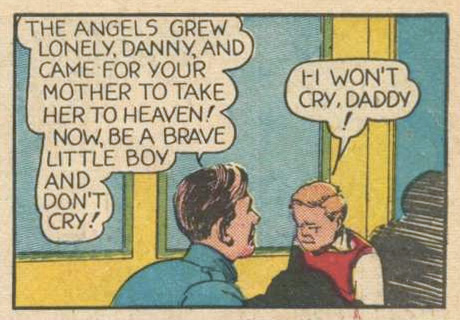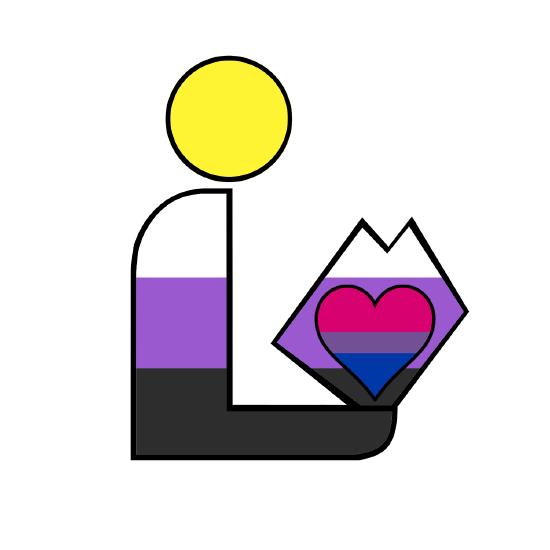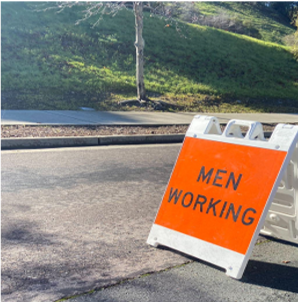5.8: Gender Roles
- Page ID
- 167814
Gender roles are the broad cultural expectations of males and females which you probably have learned to follow. Those rules are made up of the norms, or standards created by society. Gender roles dictate how people should think, speak, act, dress and interact with society based on these social constructions. The attitudes and expectations surrounding gender roles are typically based not on any inherent or natural gender differences, but on stereotypes about the attitudes, traits, or behavior patterns of women or men. Gender stereotypes form the basis of sexism, the belief that males are superior to females, and create a gendered script we are taught to follow.

Gender schemas we make based on the script are deeply embedded our cognitive frameworks and play a role in defining what we perceive as correct male vs. female roles (note and an acknowledgement of a false binary: as of this writing we are unable to find stereotypical cultural expectations or scripts for non-binary people so the gender roles we are discussing are only M/F). Agents of socialization such as parents, teachers, television, music, or books work to reinforce what has been traditionally seen as ‘male’ or ‘female’ behavior. Oftentimes, adults perceive gender differently than children. This is due to the gender expectations they are taught as young children which shape their adult minds.

"Non Binary Bisexual Pride Library Logo" by Hafuboti. Public Domain.
The phrase “boys will be boys” is often used to justify behavior such as pushing, shoving, or other forms of aggression from young boys. The phrase implies that such behavior is unchangeable, and something that is part of a boy’s nature. Aggressive behavior, when it does not inflict significant harm, is often accepted from boys and men because it is congruent with the cultural script for masculinity. The “script” written by society is in some ways similar to a script written by a playwright. Just as a playwright expects actors to adhere to a prescribed script, society expects women and men to behave according to the expectations of their respective gender roles. Scripts are generally learned through a process known as socialization, which teaches people to behave according to social norms (Griffiths & Kierns, 2015).
Gender roles shape individual behavior, not only by dictating how people of each gender should behave, but also by giving rise to penalties for people who don’t conform to the norms. While it is somewhat acceptable for women to take on a narrow range of masculine characteristics without repercussions (such as dressing in traditionally male clothing), men are rarely able to take on more feminine characteristics (such as wearing skirts) without the risk of harassment or violence. This threat of punishment for stepping outside of gender norms is especially true for those who do not identify as male or female. Transgender, genderqueer, and other gender-nonconforming people face discrimination, oppression, and violence for not adhering to society’s traditional gender roles. People who identify as gay, lesbian, bisexual, or queer are also ostracized for breaking the traditional gender norm of who a person of a given sex “should” be attracted to. Even people who identify as cisgender (identifying with the sex they were assigned at birth) and straight (attracted to the opposite sex) face repercussions if they step outside of their gender role in an obvious way.
In creating this textbook, we sought out many experts to advise, consult and share wisdom. Dr. Jamie Weinstein, Family Physician, was kind enough to respond to specific questions posed here regarding her work with gender creative youth as a family practitioner. It begins with a little bit about her and the Q & A follows.
I see folks of all ages for routine preventive health care as well as any urgent illnesses that can be managed in an office. As a family doctor I try to focus on people in the whole context of their lives and relationships, not just as a collection of illnesses. I don't have special training in adolescent medicine, gender affirming care or human sexuality, though I have spent a lot of time talking/thinking/reading and educating myself and I have a very privileged perspective to be able to try out ideas and get feedback from my patients over the past 20 years.
What are the concerns of gender creative and nonbinary youth?
That's an interesting first question for me :)
How do you support the youth?
As a provider, parent, and friend I would say one of the overarching issues is being able to be ‘seen’ and accepted by others as who you are or are becoming…especially when you don't fit into the cis/hetero/binary categories and might not have supportive or knowledgeable friends and family.
There are so many ways to go with this question but I'm gonna start really general. I think one of the most important ways I can support is actually by changing my gendered language and my gendered world view across the board. Asking pronouns for everyone is a really simple way to start to do this. I want all my patients to be more comfortable in a less heteronormative, less gendered, less binary world. When I use non gendered language and ask about pronouns, folks that may want to share more hopefully see that they can, folks that don't know what I am talking about have an opportunity to learn (and I can use my power and privilege as a white, cis, hetero, old doctor to have those conversations). Then, depending on how kids answer we can then go deeper if they want to. I would say in general for all things with teens, I like to start really simple and not overdo it - kind of like how you talk about sex with little kids - answer the question they are actually asking in a developmentally appropriate way, and then wait to see what else they want to know - in this case signal by asking pronouns, try to create an atmosphere of trust, and then give kids the opportunity and agency to ask more and go deeper if and when they want.
I think generally trans/NB folks (and everyone probably) want health care in a setting that feels comfortable to them, from providers they feel comfortable with and also don't have to have every visit and interaction always be about their gender identity - trans folks sprain their ankles too, and sometimes being gender affirming is not actually talking about gender, if that makes sense.
What are the concerns of their families? How do you support the families?
For some parents and loved ones I can help validate and contextualize. I can answer questions they can't (and shouldn't) be asking their kids, and give them a place to talk openly about their concerns. Sometimes, I need to be a fierce and supportive advocate, but a lot of times I have parents who are feeling really overwhelmed and confused, and are trying to do their best. Having a place where they can talk openly and mess up pronouns and say their deepest fears so that then they can be supportive and affirming is really valuable. Also in 2022 in Northern California, we have a lot of great resources - folks way more experienced and knowledgeable than me, and I can share that info.
What advice do you give other doctors working with gender creative youth?
Luckily, I think there is way more formal and informal education and understanding about sexual and gender identity and expression, so it's becoming more and more woven in. I really encourage folks to get comfortable asking and using pronouns and being more mindful of their language they use. For kids that don't have supportive families and friends or access to trans NB/queer communities, their health care provider may be the only person/place they can talk about these issues and get correct information, so it's vital that providers are aware and create the space for kids to talk. If we don't, many kids who need info and support may not feel comfortable telling us, and getting the information and care they need. Unfortunately, as we know, trans/NB kids have much higher rates of depression and suicide, so their safety and lives are literally at stake. I think relatively soon there will be questions about gender identity in routine pediatric screening tools, which I think really needs to happen.
One piece of advice that is relevant here for docs who may be new and nervous about ‘getting it right’… is how to acknowledge and apologize when you mess up without centering yourself and making the other person responsible for making you feel better. So, for example, when you mis gender or mis pronoun, which is inevitable, it's important to be able to correct, apologize and move on; I think too often trans/NB folks end up being made to feel responsible for other people’s comfort.
What do you enjoy most about working with gender creative youth as their doctor?
Just in general I love taking care of kids and young adults; I love working with folks in different phases of development and seeing how their brains are processing and developing over time. I love challenging myself to try to get all my patients the information they need in a way they can absorb it, really take it in and integrate it into their lives and with kids it's particularly challenging and fun. Many kids (adults too) and especially trans/NB folks, don't have enough people in their lives that are validating them and loving them for who they are; it’s such an honor and privilege when I get to do that. On top of that, many LGBTQIA+ folks have had really miserable experiences with health care (often meaning they have avoided getting care they need), so it feels really important to try to get it right.
What is most challenging for you in doing this work?
I wish I had more time and could do more of it (I'm a generalist family doctor with so many competing demands).
What are the terms that youth are embracing to name their gender?
Honestly I feel like terminology is often in flux and even in affirming communities there can be differences of opinion… Some folks use words for themselves that others might find insulting or offensive. I usually just try to use whatever words folks use for themselves.
I think we can always ask folks their pronouns but then consider if you really need to know their gender identity; is it really relevant for you to know at that moment? We don't generally ask congruent presenting cis folks to tell us “what they are”. One of my kids said early on when I asked what they wanted grown-ups to know about trans kids, something like why are grown-ups so obsessed with what gender I am all the time - stop worrying about it and just relate to me.. Worth thinking about.
Here is a great resource of examples of Gender Inclusive Language in health care. I also am a huge fan of not saying anything is normal; I don't think it's helpful as a concept when we are talking about bodies/people generally, so I just say that things look healthy instead. For example, I used to say kids have normal growth and development, whereas now I say healthy growth and development. The same occurs with genital exams/cervical cancer screening; there is no normal appearing vulva or cervix. I guess some folks might consider calling things “healthy” as ableist, but for the purpose of screening exams it works for now.
How do you approach negative emotions and reactions from family members (either towards you or gender creative youth) regarding gender identity?
I don't like or use the word ally, but I do really think that if I can be the person that has to address ignorant or rude questions or comments relating to gender identity and expression I am more than happy take that on (though it's hard not to roll my eyes when folks want to talk about how grammar is just soooo important to them and they just can't handle using they/them for a singular person). My personal experience is that folks are much more likely to just avoid you then have a confrontation when they realize it's personal, or when I am the doctor telling them something. Honestly in places like Marin and Sonoma (Northern California), people are often more likely to be overdoing it to show you how accepting they are.
One of the things I have seen that I wish I could communicate to parents is unintentional harm. Many people say things about LGBTQIA+ folks generally or in passing that they would not say if they knew their own child was any of those identities, and a lot of kids are right now. Unfortunately for some folks, it doesn't matter and that's a different issue, but my experience is that many folks will dramatically change their views once someone they love and care for ‘comes out,’ and it can be hard to turn that around once your kid has heard you say it.



